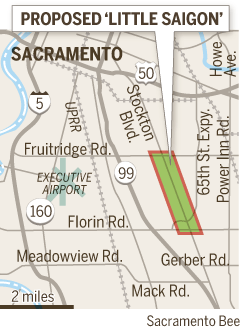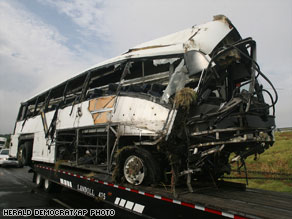May 17, 2010
Written by C.N.
For a Change: Good News in Racial, Ethnic, & Immigration Relations
I know many of my recent posts have focused on the “bad news” — examples of tensions and hostilities when it comes to racial/ethnic and immigration news. However, there are certainly examples of the opposite — positive and improving relations between different groups in American society that illustrate how cultural differences can be bridged, or at least traditionally underrepresented groups achieving success. Here is a summary of some of the “good news.”
Michigan’s Rima Fakih Wins Miss USA Pageant
Lebanese American immigrant Rima Fakih is crowned Miss USA for 2010. Ms. Fakih resides in Dearborn MI, home of the largest Arab American community in the U.S. and a site of several controversies and tensions in recent years. Nonetheless, her victory is a positive symbol that such tensions can be overcome in this particular instance:
Fakih, a Lebanese immigrant, told pageant organizers her family celebrates both Muslim and Christian faiths. She moved to the United States as a baby and was raised in New York, where she attended a Catholic school. Her family moved to Michigan in 2003. Pageant officials said historical pageant records were not detailed enough to show whether Fakih was the first Arab American, Muslim or immigrant to win the Miss USA title.
Sacramento to Designate ‘Little Saigon’ District

The latest officially-named “Little Saigon” celebrates the Lunar New Year in Sacramento CA, home to about 50,000 Vietnamese Americans. As sociologists have documented, these newly-emerging suburban ethnic enclaves have revitalized stagnant areas by bringing in new businesses, customers, tourists, residents, and revenue for the city and state. However, as some of the comments in the Sacramento Bee story linked above show, many people still harbor hostile sentiments to anything that they perceive to be “un-American.”
Thirty-five years after the fall of South Vietnam, Sacramento’s growing Vietnamese community will ask the City Council on Tuesday to designate a two-mile stretch of Stockton Boulevard as “Little Saigon.”
The business corridor south of Fruitridge Road – chock full of restaurants, nail and hair salons, jewelry stores and Asian markets – would become Sacramento’s first official ethnic neighborhood. Community leaders hope the branding will provide an economic shot in the arm that will defuse some of the crime along Stockton Boulevard.
Radio Show Bridges Cultural Gaps with Hmong Hunters
Also in Sacramento, Yia Yang, a Hmong American immigrant from Laos, serves as a valuable resource to educate recent Hmong immigrants about hunting regulations and practices, to avoid the kind of misunderstandings and tensions that led to the tragic hunting murders in Wisconsin several years ago.
Along the barren airwaves of AM radio in Northern California, somewhere between gospel music and traffic updates, Yia Yang can be heard telling his devoted listeners to always be aware of their gun muzzles.
A 50-year-old Hmong immigrant from northern Laos, Mr. Yang is the host of a regular all-things-hunting program on KJAY 1430-AM. The station serves one of the nation’s largest Hmong populations — one for whom the link between hunting and survival is still palpable. “In Laos a main source of food was wildlife,†said Mr. Yang, who owns a used-car lot in Sacramento, a city with more than 16,000 Hmong residents. . . .
State officials praise Mr. Yang for translating the nitty-gritty of fish and game law for people from an ethnic group that can be wary of authority figures. Capt. Roy Griffith, who runs the fish and game agency’s hunter education program and has been an on-air guest of Mr. Yang, said Mr. Yang provided “a huge service to the state.†. . . State agencies overseeing hunting and fishing in Minnesota and Wisconsin have hired Hmong speakers to educate, translate and work as cultural ambassadors to the Laotian immigrant population.
Cal State to Grant Degrees to WWII Internees
More than 70 Japanese Americans whose college careers at California State University campuses were derailed when they were sent to World War II internment camps are getting their diplomas. Six CSU campuses are awarding honorary degrees over the next three weeks to former students who were unable to complete their studies once they were forced into the camps established by President Franklin Roosevelt in 1942.
Some of the aging alumni plan to attend the special ceremonies and those who are deceased or unable to travel will be represented by their families. . . . Both the Cal State system and the University of California decided last year to belatedly honor the estimated 950 students of Japanese descent who were interned during the war. Students from four UC campuses – San Francisco, Berkeley, Davis and Los Angeles – received honorary degrees during winter commencement.
Asian Judge Nominee Shows Community’s Progress
Goodwin Liu, Associate Dean and professor at the University of California at Berkeley law school, is poised to become only the second Asian American judge in the federal appeals courts after the Senate Judiciary Committee voted to pass his nomination to the full Senate for a vote. More generally, his success represents the progress of Asian Americans entering the highest levels of the judicial system.
Asian-Americans are 5 percent of the U.S. population and 15 percent of the doctors, but about 3 percent of the lawyers. When it comes to lawyers becoming federal judges, which requires strong networks and political connections, Asian-American representation is even smaller.
Ten of 875 active federal judges, just over 1 percent, are Asian-American, according to the National Asian Pacific American Bar Association (NAPABA). On the appeals court level, which has outsized influence in shaping the nation’s laws, only one of 175 judges is Asian: Denny Chin, who was confirmed just last month.
If Liu is confirmed, he would join Chin and Harold Koh, former dean of Yale Law School and currently a State Department legal adviser, as potential candidates to be the first Asian judge on the Supreme Court. . . .
Asian-Americans constituted 8.1 percent of law school students in the fall of 2009, up from 7 percent in the fall of 2000, according to the Law School Admissions Council. And Obama has accelerated the pace of Asian nominations to the federal bench. George W. Bush placed four Asians on the bench and Bill Clinton five; Obama has nominated eight so far, including Liu.
Mayor Proclaims Houston-Nanjing Friendship Association Day
Annise Parker, mayor of the city of Houston, on Saturday proclaimed May 15, 2010 as “Houston-Nanjing Friendship Association Day”. In a proclamation to the newly-established association, Parker said Houston is a city of rich culture diversity and has been enriched by the presence and contributions of its citizens of Chinese ancestry.
“Houston recognizes their (Chinese ancestry) important role in the culture, civic, economic and spiritual life of our city,” Parker said, “A good relationship between Houston and Nanjing from economic, trade, tourism and culture exchange aspects would significantly benefit the citizens of these two cities, and also enhance the understandings and good relationships between the United States and China.”


